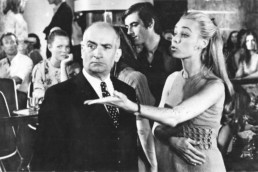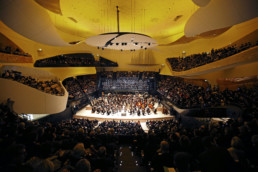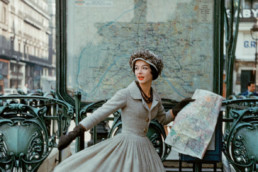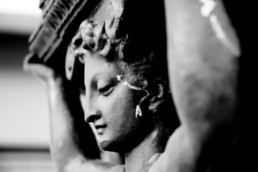At the turn of Parisian avenues, like immobile sentinels, stand the Morris columns, those strange cylindrical monoliths that punctuate the urban landscape of the French capital. Introduced for the first time in 1868, these advertising columns seamlessly integrated into the urban fabric of Paris, becoming familiar and charming symbols of the City of Light.
The Morris columns, born from the imagination of printer Gabriel Morris, were initially intended to regulate the rampant illegal advertising that was taking over the city’s walls. By offering a dedicated and organized space for theater announcements and other advertisements, they quickly found a place in the hearts of Parisians. Morris’s idea was simple yet ingenious: to create an aesthetic and functional structure that would serve as a display for posters while beautifying the streets of Paris.
An interesting anecdote takes us back to the early years of the columns’ existence. One spring day in 1870, a distracted passerby, absorbed in the contemplation of a new poster announcing the premiere of a play, tripped and dropped his hat into a sewer. The incident caused a small riot of laughter among onlookers and became the delight of chroniclers of the time. From that day, the Morris columns became not only an advertising support but also an essential element of daily and social life in Paris.
Over the decades, the columns multiplied, reflecting the evolution of tastes and trends. In the 1920s, Art Deco posters, with their clean lines and bright colors, adorned the columns, reflecting the artistic vibrancy of the time. The columns themselves became works of art, contributing to the beautification of the city and catching the eye of passersby.
During World War II, the Morris columns played an unexpected role. Some were used by the resistance to communicate coded messages or to hide documents. Their seemingly benign presence became a valuable tool in the fight against the occupier, adding a heroic dimension to their history.
Another memorable episode took place in the 1960s, when a group of avant-garde artists decided to “hijack” several Morris columns by pasting provocative and surrealist posters on them. This act of artistic rebellion caused a scandal but also a sensation, helping to redefine the role of these columns in public space, transforming them into supports for creativity and free expression.
Today, the Morris columns continue to punctuate Parisian sidewalks, carrying announcements for shows, films, and cultural events. They are more than just advertising supports; they are an integral part of the Parisian landscape, silent witnesses to the evolution of the city and its inhabitants. Each column, with its colorful posters and graceful curves, tells a story, that of Paris and its many faces.
Thus, at every street corner, the Morris columns remind us that even the most ordinary objects can have an extraordinary history, rooted in daily life and elevated by time and collective memory.
Lire également :
11 November 2024
The Seine: The Elegant Lifeline of Paris
5 November 2024
Through the Veils of Creation: CHANEL and the Paris Opera
5 November 2024
The Pantheon: A Republican Sanctuary in the Heart of Paris
28 May 2019
Geneviève Grad
10 December 2017
The Philharmonie de Paris: Modern Harmony and Musical Heritage
29 June 2017











